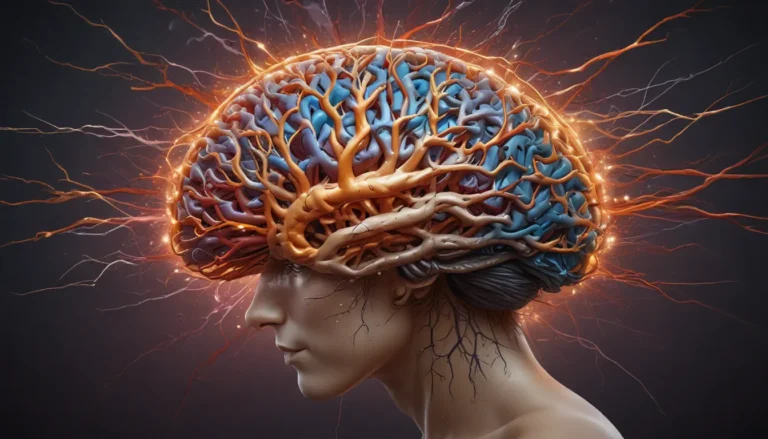A Note About Images: The images used in our articles are for illustration purposes only and may not exactly match the content. They are meant to engage readers, but the text should be relied upon for accurate information.
When it comes to the intricate world of biological processes, kinases stand out as enigmatic entities that play a vital role in regulating various cellular functions. These fascinating enzymes act as cellular traffic controllers, directing essential messages within our cells and impacting everything from cell growth to brain function. With over 500 different types identified so far, kinases resemble a diverse team of superheroes in our bodies, each with its unique power to influence our overall well-being. In this article, we will delve into 18 intriguing facts about kinases that shed light on their complex nature and diverse roles in the biochemical world.
Unveiling the Role of Kinases in Cell Signaling
Kinases are enzymes that serve as crucial players in cell signaling by transferring phosphate groups from adenosine triphosphate (ATP) to specific protein targets. In doing so, they regulate various cellular processes essential for maintaining the proper functioning of our bodies.
Exploring the Diversity of Human Protein Kinases
Within the human genome, over 500 protein kinases have been identified, each possessing unique substrate specificity and function. This diverse array of kinases highlights the complexity of cellular signaling pathways and underscores their significance in biological processes.
Understanding the Significance of Kinases in Disease
Dysregulation of kinases has been implicated in numerous diseases, including cancer, neurodegenerative disorders, and immune system dysfunctions. Certain kinases can have dual roles, acting both as oncogenes and tumor suppressors depending on the cellular context.
Unlocking the Therapeutic Potential of Kinase Inhibitors
Kinase inhibitors have emerged as a promising class of drugs with the ability to selectively target specific kinases, disrupting aberrant signaling pathways and offering potential therapeutic benefits. These targeted therapies have become a key strategy in the treatment of various diseases, particularly cancer.
Delving into the Classification of Kinases
Kinases can be categorized into different families, including serine/threonine kinases, tyrosine kinases, and atypical kinases, each with its unique features and roles in cellular signaling.
Revealing the Mechanisms of Protein Phosphorylation
Protein phosphorylation, a reversible process regulated by kinases and phosphatases, plays a vital role in modulating cellular activities. Phosphatases act as the counterpart to kinases, removing phosphate groups and restoring proteins to their inactive state.
Unraveling the Regulation of Kinase Activity
Kinase activity can be influenced by various mechanisms, such as phosphorylation, the binding of regulatory subunits, or allosteric modulation, highlighting the intricate regulatory mechanisms that govern cellular signaling pathways.
Harnessing Kinases for Cancer Therapy
Aberrant kinase signaling is a hallmark of cancer, making kinases key players in the development and progression of this disease. By targeting specific kinases, researchers have been able to develop innovative therapies aimed at disrupting cancer cell growth and survival.
Envisioning the Impact of Kinases on Immune Responses
Kinases play a critical role in regulating immune responses by influencing the activation and signaling of immune cells. Their involvement in the body’s defense against pathogens underscores their importance in maintaining proper immune function.
Navigating the Role of Kinases in Neuronal Signaling
Kinases are fundamental players in neuronal signaling, impacting synaptic plasticity, neurotransmitter release, and neuronal survival. Their role in regulating brain function and cognition highlights their significance in the complex workings of the nervous system.
Embracing the Diversity of Kinase Structures
Kinases exhibit diverse structural features, with some possessing compact structures and others featuring extended domains and regulatory regions. These structural variations contribute to the functional versatility of kinases in orchestrating cellular activities.
Unveiling the Influence of Post-Translational Modifications on Kinase Activity
Post-translational modifications, such as phosphorylation by other kinases or modifications like acetylation and ubiquitination, can modulate kinase function and regulate their activity within cellular signaling networks.
Appreciating the Complexity of Kinase Signaling Networks
Interactions between different kinases within signaling pathways create complex networks that allow for precise regulation of cellular processes. The intricate web of kinase signaling highlights the sophistication of cellular communication and coordination.
Considering the Impact of Cellular Localization on Kinase Activity
The spatial distribution of kinases within the cell can influence their access to specific substrates and dictate their signaling output, underscoring the importance of cellular localization in regulating kinase activity.
Unveiling the Extensive Research on Kinases
Scientific investigations into kinases have uncovered their pivotal roles in cellular signaling and paved the way for innovative therapeutic strategies. Continued research into kinases promises to advance our understanding of biological processes and provide new avenues for drug discovery and personalized medicine.
In conclusion, kinases are pivotal proteins that exert significant control over cellular signaling and regulation. Their intricate mechanisms of action and diverse roles in disease underscore their importance in the field of biology and medicine. By unraveling the mysteries of kinases and related signaling pathways, we open doors to new possibilities for therapeutic interventions and advancements in biomedical research.
FAQs
Q: What are kinases?
A: Kinases are enzymes that play a critical role in cell signaling by adding a phosphate group to other molecules, typically proteins, in a process known as phosphorylation.
Q: How many kinases are there in the human genome?
A: The human genome encodes for approximately 500 different kinases, which make up around 2% of all human proteins.
Q: What diseases are associated with kinase dysfunction?
A: Kinase dysfunction has been linked to various diseases, including cancer, neurodegenerative disorders, inflammatory diseases, and cardiovascular diseases.
Q: How are kinases regulated?
A: Kinase activity is tightly regulated through various mechanisms, including phosphorylation, allosteric modifications, protein-protein interactions, and binding of regulatory molecules.
Q: Are there any drugs that target kinases?
A: Yes, many drugs have been developed to target specific kinases, particularly in the treatment of cancer. These drugs are designed to inhibit or modulate the activity of specific kinases to interfere with disease progression.
Q: Can kinase inhibitors cause side effects?
A: Kinase inhibitors can cause side effects, as they may also affect the activity of kinases in healthy cells. However, extensive research is conducted to minimize off-target effects and improve the therapeutic index of these inhibitors.
As we continue to unravel the intricate world of kinases and their multifaceted roles in cellular communication, we discover new avenues for research and innovation. The journey through the realm of kinases is one filled with wonder and possibility, offering profound insights into the complexity of biological systems and the potential for transformative therapies. Join us as we delve deeper into the enigmatic world of kinases and embrace the endless possibilities they hold for the future of medicine and science.






